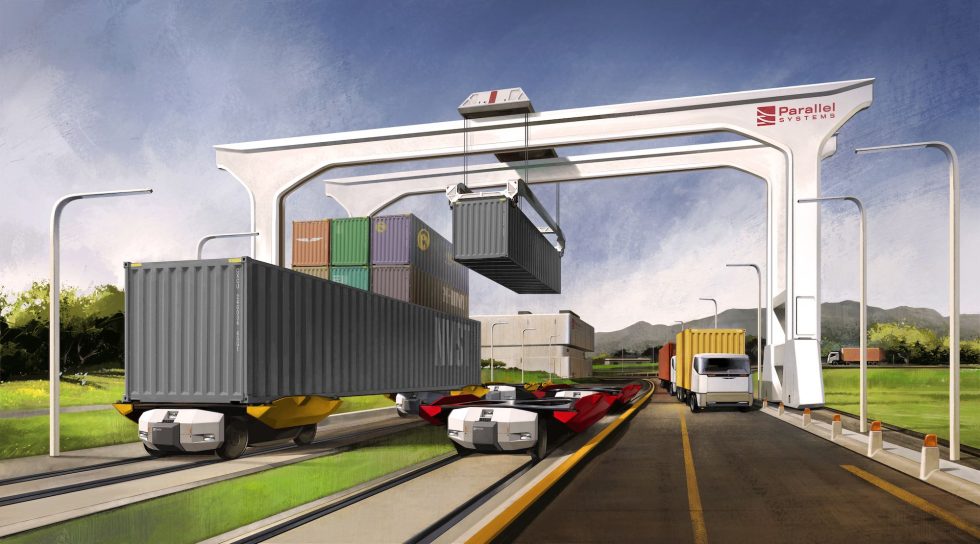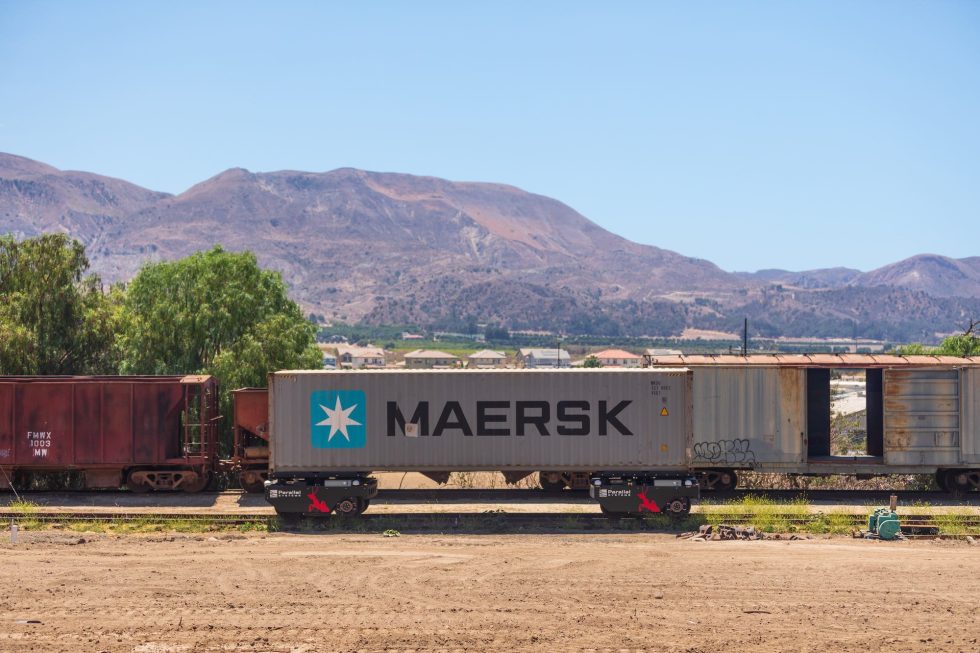For the last 200 years, freight trains haven’t changed much; massive locomotives still move relatively dumb freight cars. Certainly, rail fans could argue that plenty has changed—they’re not wrong!—but from a distance, trains work pretty much the same today as they did in the 1800s.
That may change, though, if three former SpaceX engineers have placed their bets properly. Today, their startup, Parallel Systems, has emerged from stealth mode with a prototype vehicle that promises to bring advances in autonomy and battery technology to the relatively staid world of freight railroads. In the process, they hope to not just electrify existing routes but also bring freight rail service to places that don’t have it today.
Whether their bet pays off will hinge on whether freight railroads and their customers will buy into a new way of operating. Parallel Systems isn’t just taking an existing freight train and swapping its diesel-electric locomotive for a battery version. Instead, it’s taking the traction motors and distributing them to every car on the train. It’s how many electric passenger trains operate, but it's a system that has been slow to migrate to the freight world.
Parallel Systems is going a step further, though. Each of its rail vehicles consists of a battery pack, electric motors, four wheels, and a package of sensors that allow it to operate autonomously. And since a large portion of the world’s freight is shipped via 20-foot containers, Parallel Systems is using the containers themselves to complete the car, bridging the gap between the sets of wheels at either end of a train car, also known as bogies.
Here’s how it works: two vehicles position themselves far enough apart to support the container, which is lowered by a crane. The vehicles then use their short- and long-range cameras to navigate the rails. Because each rail vehicle has everything it needs, it doesn’t have to be part of a long train. In theory, one container supported by two Parallel Systems vehicles could move from origin to destination by itself. In reality, though, they’ll likely end up traveling in platoons. (Parallel Systems doesn’t call them trains because the individual cars aren’t coupled.)

“We think our platoon sizes are ideally between ten and 50 cars,” Matt Soule, CEO of Parallel Systems, told Ars. “With ten, you’re sharing the aerodynamic load over multiple cars, and the benefits of that kind of asymptote out around ten cars. But on the business case side, in terms of serving the volumes that might be there, we think moving in platoons of up to 50 is the max.”
By modern standards, a 50-car train is pretty short. “Trains have always been long, but they’ve gotten longer in recent years because you get really good unit economics when you do that,” Soule said. “The problem now is that you have the three-mile-long train. Where do you park a train that big? And the answer is 'not that many places.'”
His hope is that, once trains become smaller, railroads will be able to move cargo that would otherwise be handled by trucking companies. “We’re enabling rail to do more miles because when the terminal becomes smaller, you've got more options to put it closer, where your customer and shipper are,” Soule said.
Parallel Systems' rail vehicles can travel up to 500 miles on a charge, and a two-vehicle team can carry a single or double stack of containers holding 64,000 pounds (29,000 kg) each. Its camera-based vision system helps it watch for other trains and obstacles, and Soule thinks the company's sensor suit will be enough to handle the relatively simple environment. Remote human operators could help cars decide how to deal with edge cases, he said. The startup has a first-generation prototype running on a test track in Southern California, and the company is currently building a revised version. By the third version, Soule hopes to be ready for production.



3175x175(CURRENT).thumb.jpg.b05acc060982b36f5891ba728e6d953c.jpg)


Recommended Comments
There are no comments to display.
Join the conversation
You can post now and register later. If you have an account, sign in now to post with your account.
Note: Your post will require moderator approval before it will be visible.